We want you to know that this site is supported by our users. Some of the links you’ll find on our site are affiliate links, and if you make a purchase through those links, we may earn a commission at no extra cost to you. Thank you for your support – it’s what keeps us going!
Calling all coffee lovers who find themselves lost in the maze of espresso machines! We feel your caffeinated struggle. With a multitude of options flooding the market, choosing the perfect espresso maker can feel like navigating a labyrinth of beans. Fear not, weary seekers of the perfect brew! We’re here to shed light on the path ahead, unraveling the mysteries of each espresso machine type. From manual marvels that demand your attention to automatic wizards that promise convenience, we’ll help you untangle the web of choices. So put on your explorer’s hat, grab a strong cup of joe, and let’s embark on a quest to find the espresso maker that will make your taste buds sing! Together, we shall conquer the overwhelming world of espresso machines, one sip at a time.
- What factors should I consider when choosing an espresso machine?
- Need help deciding which type is right for you? Take the quiz!
- Manual Espresso Makers
- Semi-Automatic Espresso Machines
- Automatic Espresso Machines
- Super-Automatic Espresso Machines
- Pod-Based Espresso Machines
- Stovetop Espresso Makers (Moka pot)
- Final Word
What factors should I consider when choosing an espresso machine?
When embarking on the journey to find your perfect espresso machine, it’s important to consider several factors that will impact your brewing experience. By keeping these key elements in mind, you can make an informed decision that aligns with your preferences and requirements. Here are the factors to consider when choosing an espresso machine:
- Budget: Determine how much you’re willing to invest in an espresso machine. Prices can vary greatly depending on the type and features of the machine. Set a budget that suits your financial situation and look for options within that range.
- Brewing Control: Consider how much control you want over the brewing process. Manual espresso makers offer the highest level of control, allowing you to adjust variables such as water temperature and extraction time. Automatic machines provide convenience but have limited control. Choose a machine that matches your desired level of involvement and customization.
- Experience Level: Assess your experience with brewing espresso. If you’re a beginner, user-friendly machines or pod-based systems might be more suitable. Those with brewing expertise may prefer manual or semi-automatic machines that allow for experimentation and fine-tuning.
- Convenience: Evaluate the level of convenience you desire. If you prefer a quick and effortless brewing process, super-automatic or pod-based machines offer the highest convenience. Manual and semi-automatic machines require more time and effort but provide greater control and customization options.
- Space and Portability: Consider the available space in your kitchen or wherever you plan to use the espresso machine. Some machines are compact and designed for small spaces, while others may require more room. Additionally, if portability is important to you, look for machines that are lightweight and easy to transport.
- Maintenance and Cleaning: Take into account the maintenance requirements of the espresso machine. Automatic and super-automatic machines often come with built-in cleaning features, making maintenance easier. Manual machines and some semi-automatic models may require more manual cleaning and maintenance.
- Coffee Variety: Think about the type of coffee you prefer to use. If you enjoy a wide range of coffee varieties, manual or semi-automatic machines allow you to experiment with different beans and grind sizes. Pod-based systems, on the other hand, offer convenience but are limited in terms of coffee variety.
By considering these factors, you can narrow down your options and choose an espresso machine that fits your preferences, budget, and brewing style. Remember to read reviews, compare features, and make an informed decision to ensure a delightful espresso experience at home.
Need help deciding which type is right for you? Take the quiz!
Looking for the perfect espresso machine for your specific needs? Take our quick five question quiz to find out which type of espresso machine is right for you!
Manual Espresso Makers
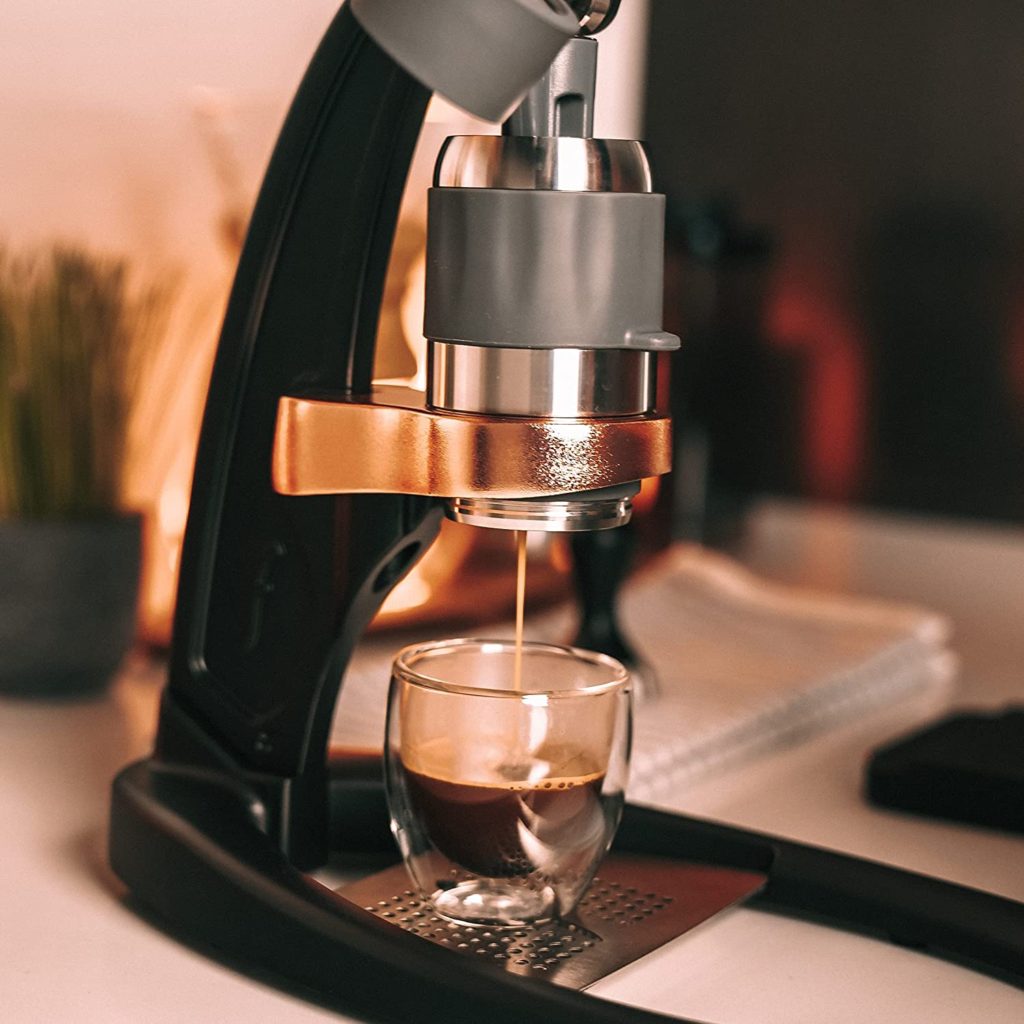
A manual espresso maker, also known as a lever espresso machine, requires the user to manually control the brewing process. These machines usually feature a lever that is used to apply pressure to the coffee grounds, extracting the espresso. Manual espresso makers offer a high level of control and customization, allowing users to adjust variables such as water temperature, grind size, and extraction time.
With proper technique and practice, manual espresso makers can produce high-quality espresso shots with rich flavor and a thick layer of crema. However, mastering the manual brewing process requires a learning curve and can be time-consuming.
Any manual espresso maker you choose will also require a standalone coffee grinder.
Semi-Automatic Espresso Machines
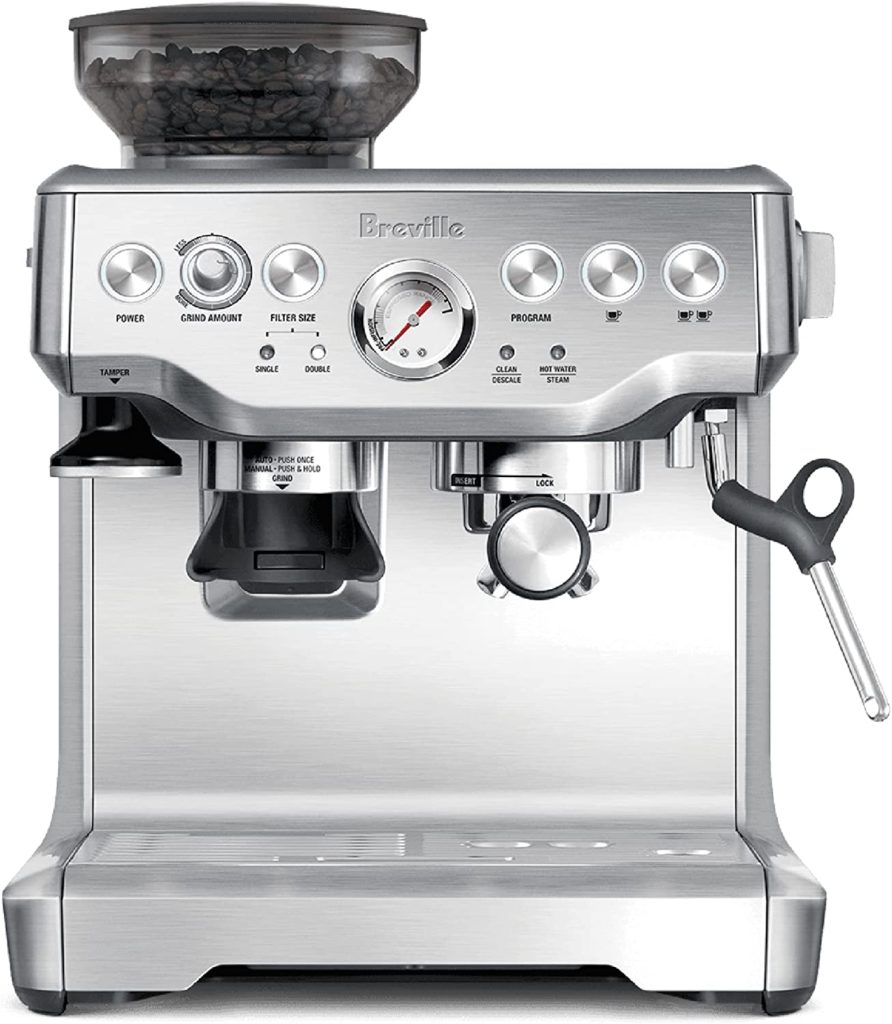
Semi-automatic espresso machines are popular choices for home and commercial use. They offer a balance between control and convenience. These machines typically feature a pump that automatically controls water pressure, eliminating the need for manual pressure application. Users have control over variables like water temperature, grind size, and tamping pressure. Semi-automatic machines often require manual grinding and tamping of the coffee grounds.
With some skill and practice, users can achieve consistent results and customize their espresso to their preferences. Semi-automatic espresso machines are user-friendly and suitable for both beginners and experienced coffee enthusiasts.
Automatic Espresso Machines
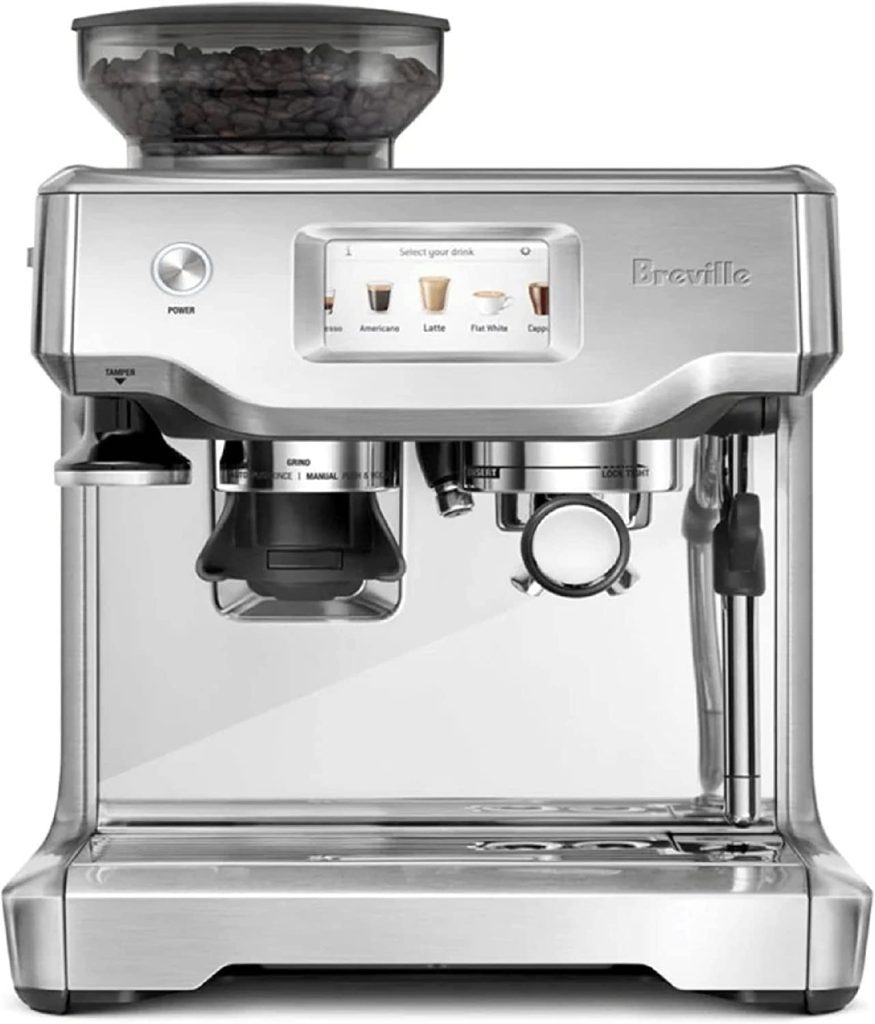
Automatic espresso machines further simplify the brewing process compared to semi-automatic machines. These machines control water temperature, pressure, and extraction time automatically, providing consistent results with minimal effort. Automatic machines typically have built-in grinders and can automatically grind, dose, and tamp the coffee.
They are easy to use and require less skill compared to manual or semi-automatic machines. However, the trade-off is limited control and customization options, as the machine handles most of the brewing variables. Automatic espresso machines are a good choice for users who prioritize convenience and consistency over manual control.
Super-Automatic Espresso Machines
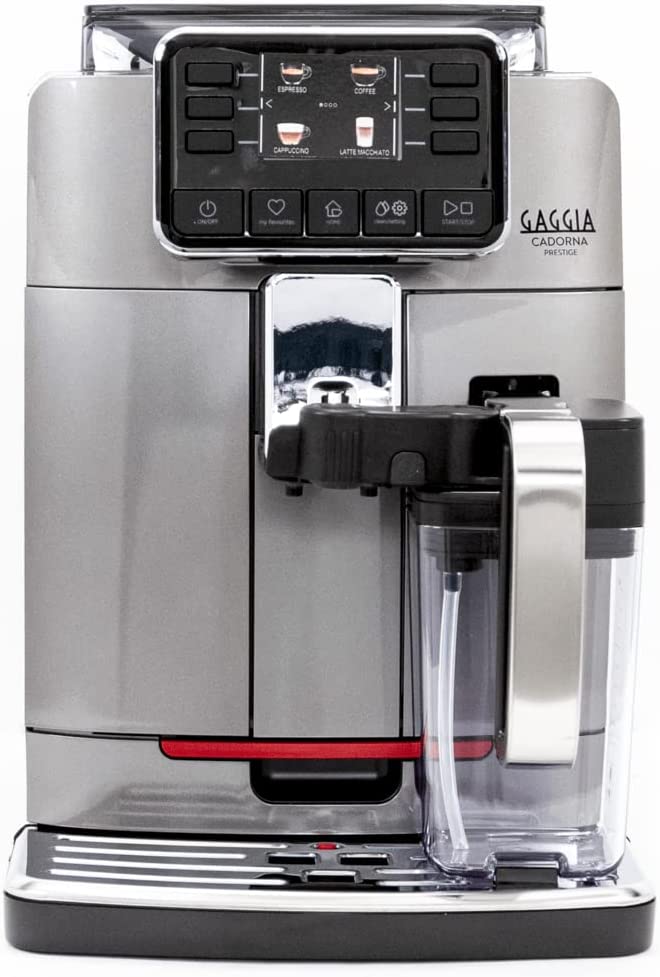
Super-automatic espresso machines take convenience to the next level. These machines handle the entire espresso-making process, from grinding to brewing, at the push of a button. Super-automatic machines often have advanced features such as programmable settings, integrated milk frothers, and automatic cleaning cycles.
They are designed for users who seek the ultimate convenience and automation in espresso preparation. While super-automatic machines offer ease of use, they generally provide limited control and customization options compared to other types of machines. They are also typically more expensive and may require more maintenance due to their complex internal components.
Pod-Based Espresso Machines
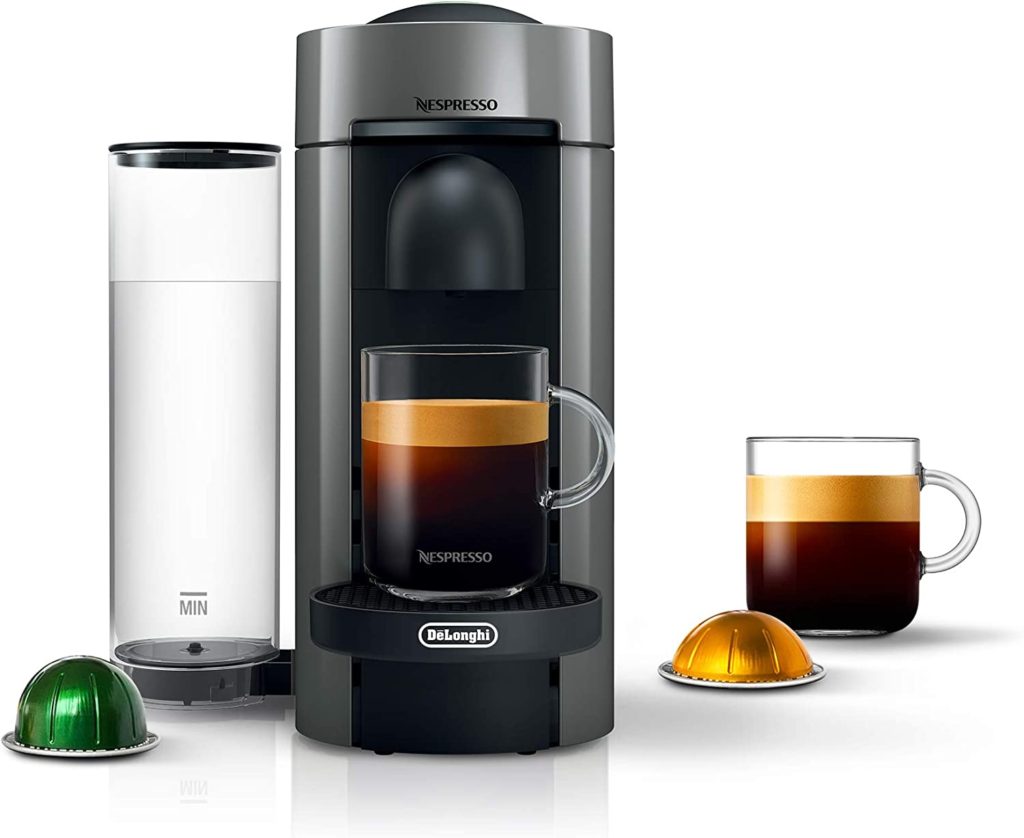
Pod-based espresso machines have gained popularity due to their convenience and ease of use. These machines use pre-packaged coffee pods or capsules that contain a measured amount of coffee. Users simply insert the pod into the machine, and it automatically brews the espresso. Pod-based machines offer consistency in taste and eliminate the need for grinding, measuring, and tamping.
They are ideal for those who value simplicity and convenience. However, pod-based systems may limit the variety and quality of coffee compared to using freshly ground beans. They can also be more expensive in the long run, as the cost of individual pods adds up, and the environmental impact of single-use pods is a concern.
Stovetop Espresso Makers (Moka pot)
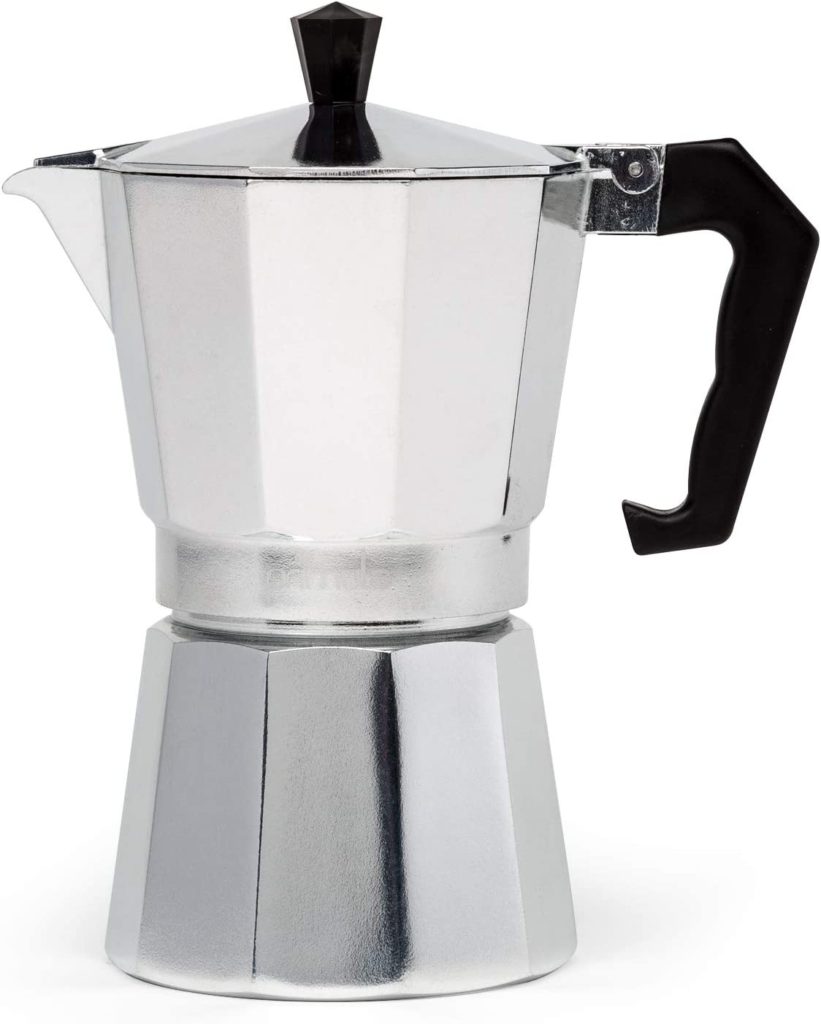
The stovetop espresso maker, commonly known as a Moka pot, is a traditional and affordable option for making espresso-like coffee. It consists of a lower chamber for water, a middle filter basket for coffee grounds, and an upper chamber to collect the brewed coffee. As the water heats up, pressure is built, forcing the water through the coffee grounds and into the upper chamber.
While it doesn’t produce the same intensity or crema as traditional espresso machines, the Moka pot brews a strong and flavorful coffee. It operates on the stovetop and does not require electricity, making it portable and suitable for travel. However, the brewing process requires manual monitoring, and the coffee produced has a distinct style compared to traditional espresso.
Final Word
Consider your priorities regarding control, convenience, customization, and budget when selecting an espresso maker. Each type has its own advantages and drawbacks, so choose one that aligns with your preferences and brewing style. By understanding the unique characteristics and functionalities of each type of espresso maker, you can make an informed decision based on your preferences for control, convenience, customization options, and budget.
If you find yourself wanting to go the route of a standalone espresso machine and coffee grinder, we also have an in-depth guide on the different types of coffee grinders and our picks for the best in each category.



